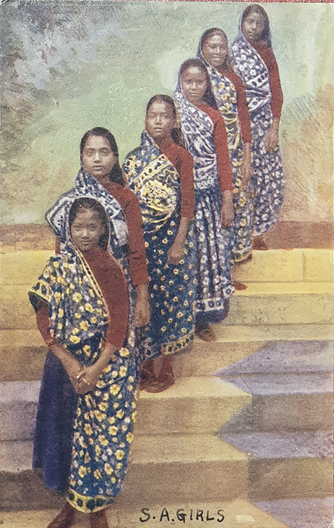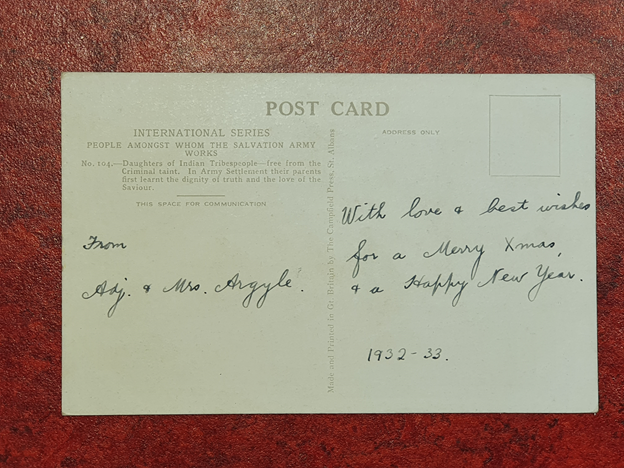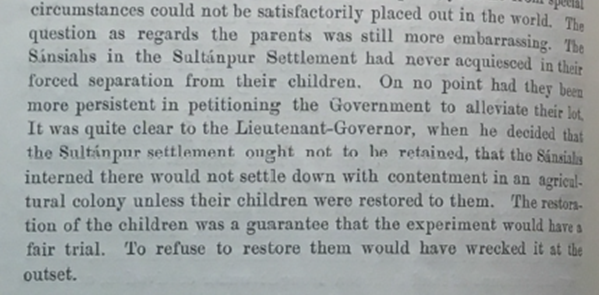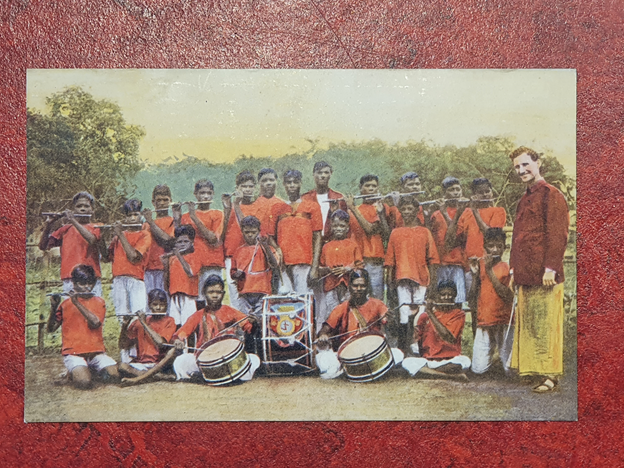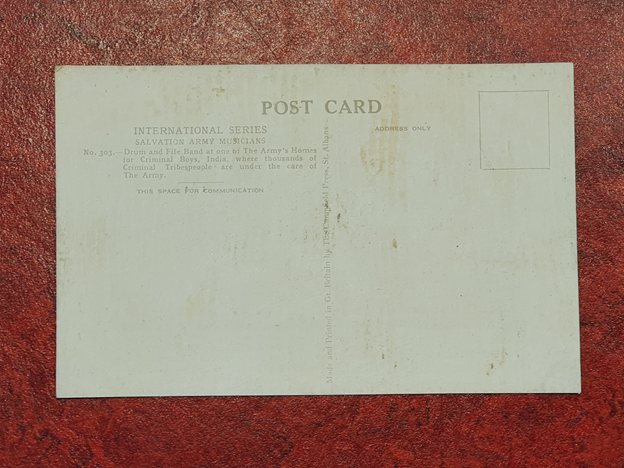From 1890, children from so-called “criminal tribes” were forcibly removed from their parents & institutionalised. The history of forced child removal in settler colonies (like Australia) is well known, but comparable practices in British India have received little attention.
I’m @HinchyJessica. This thread continues our series on the history of the Criminal Tribes Acts, centering children in this story.“Criminal tribe” was a colonial term for diverse socially marginalised and nomadic peoples whom the British considered criminals by caste occupation.2
The image above is a Salvation Army postcard of “CT” girls from an unnamed SA penal settlement, dated 1932. Disturbingly, the back is a “happy xmas” msg. Whether they were removed from their parents is unclear. More on missionaries below… 3
Colonial officials often saw children as central to the CTA. In certain periods between 1871 & 1947, the prevailing official opinion was that only “CT” children, not adults, could be “reformed” & given a “moral education.” At its extreme, this legitimized forcible child removal.4
Under the CTA, criminalised people could be either (a) restricted to their place of residence (usually a village) or (b) forcibly transported to a penal settlement & subjected to forced labour. For an overview of everyday life under the CTA: https://twitter.com/detsolnet/status/1197007335492734976?s=20.">https://twitter.com/detsolnet... 5
The 1871 CTA did not include any provisions permitting child removal. But between 1890 & 1897, Uttar Pradesh (then North-Western Provinces & Oudh) forcibly separated some “CT” children from their parents.
6
6
The Govt of India required that children could only be removed with parental consent, or as punishment for a “breach of discipline” (though this was not a punishment proscribed in the CTA). But there is no evidence that either condition was fulfilled. 7
In 1890, the UP Lieutenant-Governor “weeded out” children from Sultanpur settlement to send to a children’s “Reformatory Settlement” in Fatehgarh. He told the parents their children would become “robbers” & “prostitutes” if not removed. He did not mention the parents’ consent 8
These children were from the official “Sansi” category, which actually included multiple socially marginalized & nomadic communities. The evidence suggests child removal between 1890-6 was forcible & illegal. 9
In 1896 the NWPO govt admitted parents ‘had never acquiesced in their forced separation from their children.’ Children were sent to Fatehgarh without any details of discipline/rule violations. F& #39;s Committee of Visitors could not confirm that the detention of children was legal.10
Immediately, parents lobbied officials to see their children. In January 1891, “Some of them asked that they might be allowed to visit the Reformatory at Fatehgarh with a view to seeing their children.” 11
Parents determinedly protested the removal of their children. The UP’s Secretary (top bureaucrat) wrote that ‘On no point had they been more persistent in petitioning the Government to alleviate their lot.’ (27/10/1896). 12
Between 1890&1896, the UP came up with numerous justifications for removing children without parental consent. E.g. an 1891 policy held that children “whose presence…hindered the parents from doing full labor” could be removed. Child removal was clearly intended to discipline 13
and control parents. If they didn’t behave or work hard enough, they might be separated from their children. Between 1890 & 1896 there were between 80-115 children in Fatehgarh, so perhaps 150-200 “Sansi” children were forcibly removed. 14
Around 100-150 Barwar boys were also “apprenticed” to factories in Kanpur in the 1890s. The extent of parental consent in this case is unclear. Criminalised people likely had limited scope to object to family separation, in the context of the CTA policing regime. 15
The protests of “Sansi” parents led the UP govt to halt forced child separation in 1896. An 1897 ammendment to the CTA made child removal legal without parental consent. But thereafter the implementation of child removal was uneven... 16
precisely because it was such a drastic intervention in criminalised peoples’ lives & prompted significant resistance. The UP govt expanded family separation from 1911. I am still researching this period, so the notes below are based on preliminary research. 17
By this time, religious organisations (especially the Salvation Army) ran many “CT” penal settlements. The UP set up new “CT” children’s penal settlements at Rura, Phulpur and Gorakhpur, run by the Salvation Army. The UP wanted to work towards large-scale child removal.
The 1915 CTA report stated: ‘The time has come to enforce the separation of the children from their parents as opportunity offers.’ But some Salvation Army settlement managers were apparently loath to loose child labourers! The children of settlement "absconders" were removed.19
Again, parents resisted child removal. In 1917, some criminalized men made a ‘determined raid’ on the Rura school and assaulted a Salvation Army missionary. The raiders ‘induced some of the children to go off with them.’ 20
I am yet to tally up the number of children removed from 1911 in UP, but my impression is that it was substantially higher than in the 1890s, even though the resistance of parents meant that the numbers removed were less than the govt originally intended. 21
But in other provinces, many officials & some missionaries opposed forced child removal. The Indian Jails Committee of 1919-21 showed mixed, but generally negative opinions. I am still working out the extent of “CT” child removal beyond UP. 22
It is also worth noting that “CT” child removal was preceded by the removal of children from Hijra households. Hijras were criminalised as “eunuchs” under Part 2 of the CTA, which included provisions for forced removal of “boys” under 16. https://twitter.com/detsolnet/status/1196650326574518272?s=20.">https://twitter.com/detsolnet... 23
I am thinking through how child removal in India complicates the common demarcation of colonialism into settler and non-settler forms. Histories of child removal have mainly focused on settler colonial contexts, viewing the separation of children from their parents ... 24
as part of the wider ‘logic of elimination’ (Patrick Wolfe) that underlay settler colonialism and indigenous dispossession. Yet child removal in India did not always serve eliminationist aims. ...25
Child removal from Hijra households was intended to prevent initiation & bring about Hijras’ “gradual extinction.” But a language of elimination was much less common in relation to “CTs.” 26

 Read on Twitter
Read on Twitter